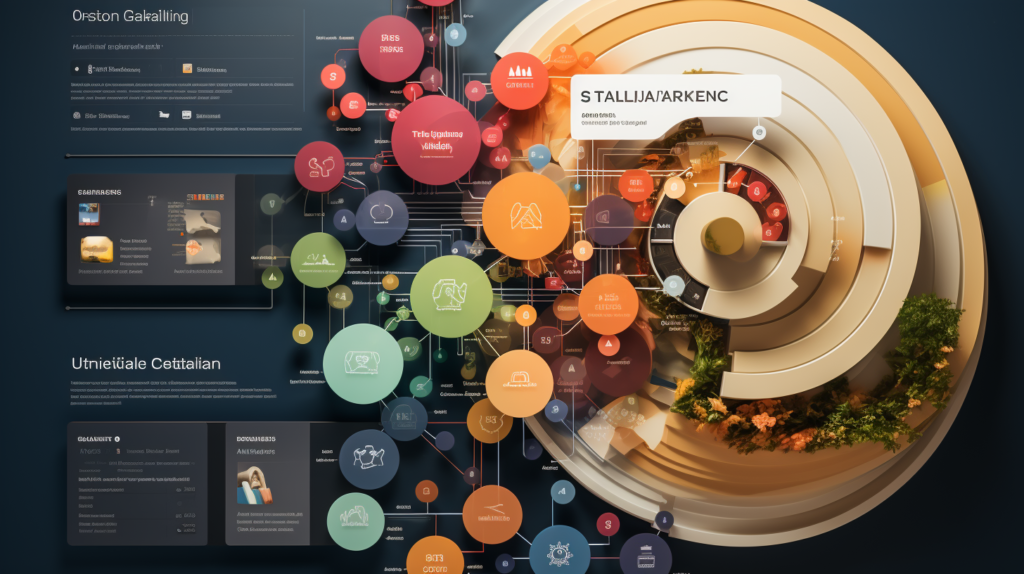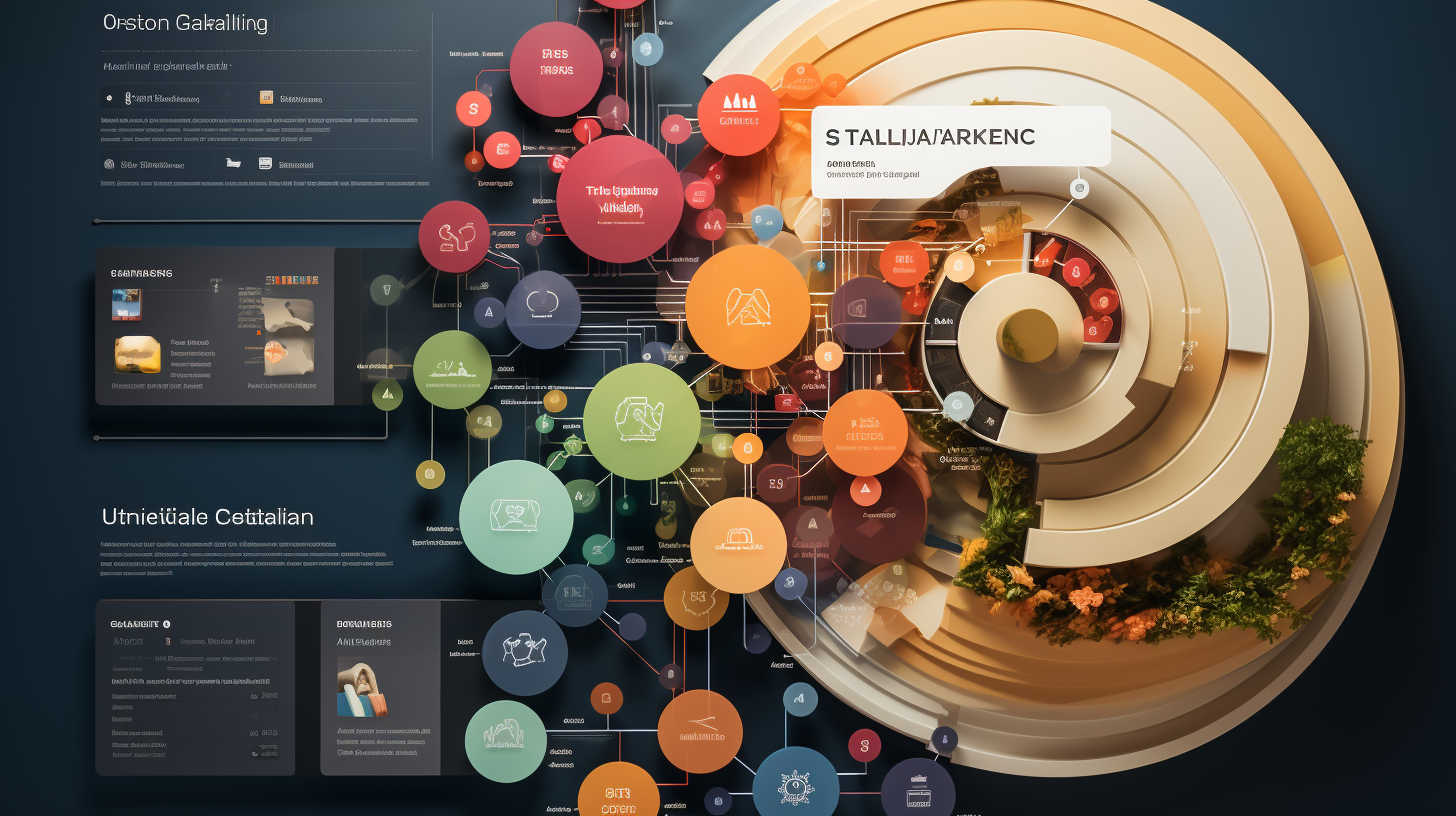Do you ever struggle with balancing multiple tasks at once? This challenge of multitasking is common to many in this fast-paced modern world. But the good news is that it doesn’t have to be a debilitating ordeal. By creating an action plan for efficient multitasking, you can gain control over your day-to-day activities and accomplish more in a shorter period of time. Read on to learn how to construct a strategy to efficiently manage multiple tasks simultaneously.
1. Introduction to Multitasking
Multitasking is a popular phrase that gets tossed around often, but what exactly does it mean? In the workplace, multitasking is the ability to handle multiple tasks at once. It’s a skill that requires deftness and focus – you’ll be working on several tasks simultaneously and need to be able to move between them with ease.
At its core, multitasking is about organization and streamlining your workload. Proper multitasking can boost your efficiency, allowing you to handle more tasks in less time. Some tasks are better handled separately, but when it’s done properly, multitasking can significantly reduce your workload.
To build effective multitasking skills, you’ll need to be able to:
- Organize Tasks: Know which tasks are the most important and prioritize.
- Be Prepared: Have the necessary items and resources on hand.
- Manage Time: Create a schedule for each task and stick to it.
With practice and good discipline, anyone can become a master of multitasking. It’s all about forming good habits – and mastering the skills that will help you get the most out of your workday.

2. The Benefits of an Action Plan
Creating an action plan can provide a person with a structure to move forward and achieve their goals. After outlining an action plan, an individual will have a clear understanding of the resources needed to achieve the goal and a timeline for the completion of the steps. All of this helps individuals to prioritize their activities and assign resources appropriately.
Having an action plan can also inspire motivation and create a sense of urgency. When someone knows that there is a specific goal in mind and a timeline to meet, they are more likely to stay on task and see the project through. Additionally, having a plan can reduce stress and keep the process organized. Having an action plan eliminates the need for guesswork and provides workers with the confidence in their work that they need to stay focused and productive.
An action plan can also give workers the skills and knowledge that they need to work more efficiently. They will be able to break tasks down into smaller, more manageable steps and be aware of the resources and time needed to complete each one. Knowing the tools that one needs to reach success is the key to keeping projects from coming to a standstill and even avoiding challenges that could have easily been avoided.
- Creates structure
- Inspires motivation
- Decreases stress
- Provides knowledge and skills
By outlining an action plan, individuals can ensure a successful start and completion of any project or goal that they have in mind. The benefits that an action plan provides are invaluable and should not be overlooked.
3. Preparing Yourself to Multitask
Multitasking often feels intimidating, but with proper preparation and focus it is an achievable goal. With that in mind, here are some tips for setting yourself up for success:
Manage Your Schedule: Be realistic about how much you can handle in one day and when you need to take breaks. Prioritize tasks and set realistic deadlines. Try blocking out chunks of your day to focus on each task. Make use of time management tools to organize and monitor deadlines so that you can take on more challenging tasks.
Stay Organized: Keep things organized and easily accessible. Make lists and outlines when necessary. Keep different tasks and different projects neatly divided and ready to switch between. Get what you need ahead of time so you don’t have to waste time looking for it.
Train Your Brain: Train your brain to stay on task and understand when it’s time to take breaks. Mental exercises can help with developing the ability to concentrate on more than one task. Be conscious of how to manage your focus and which tasks require your utmost concentration. Practice being aware of your progress while multitasking.

4. Prioritizing Your Tasks
Unless you have a time-turner like Hermione Granger, it’s impossible to get everything done in one day. That’s why it’s important to prioritize your tasks—decide which ones must get done, and set others aside for a later date.
Here are some tips to help you decide which tasks are worth your energy and focus:
- Decide which tasks are mandatory—if you fail to complete these tasks, it could have serious repercussions. Do these first.
- Include a mix of tasks—alternate between mentally stimulating tasks (such as writing or research) and physically demanding tasks (for example, organizing your desk).
- Create a timeline—allot a specific amount of time for each task to ensure you are being productive throughout the day.
At the end of the day, it’s essential to be mindful of how you prioritize your tasks. Keep your goals in mind and always take into consideration the time, energy, and focus it would take to complete them.
5. Time Management Strategies
Time management is essential for success. Learning the strategies, techniques, and processes of time management can help you make the most of your day. Here are five that you can employ to ensure a productive day ahead.
1. Create a Schedule: Allocating appropriate time to each task is one of the best strategies for managing your time. This means knowing how much time a task will take and adjusting your schedule accordingly. Knowing when to take breaks and work on different projects is essential for managing your time. Make sure there is enough flexibility in the timetable to cope with any unexpected changes.
2. Use Time Blocks: Block out time for different tasks and set time limits for each task. This is a great way to ensure you get things done. For example, set aside a specific amount of time for answering emails, preparing for meetings, and finishing tasks. This will create a sense of structure and organization that suits your own individual rhythm.
3. Be Proactive: Being ready for the day ahead is key. Create a to-do list the night before or plan out the next day’s schedule. This will help you to clearly manage your time. Set a routine – making sure that you wake up and go to bed at close to the same times everyday. During your morning, take a few minutes to relax and plan out your day, and review your calendar and to-do list.
4. Prioritize: Understand which tasks are most important and focus your time and energy on those tasks. Sort tasks into different categories such as ‘must-do’ and ‘to-do’ list. Invest the most time in important tasks and time-sensitive tasks. This will help you identify exactly what you should be working on which can, in turn, save time by not spending valuable time on less relevant tasks.
5. Delegate Responsibilities: Learning to say ‘No’ to tasks that are not an important use of your time is key. It is also important to accept help and delegate tasks to team members when it is necessary. Delegating not only saves you time, but it also frees up your mind from feeling overwhelmed with work. When taking on tasks, think carefully if there is someone else who can do it, and if it wastes your valuable time.

6. Setting Goals & Objectives
Being able to set achievable and meaningful goals and objectives is an immensely important practice in life. Goals and objectives, when created effectively, allow us to effectively organize, prioritize, and take control of our lives in a way that leads to accomplishment. Here’s some do’s and don’ts for setting goals and objectives:
Do’s
- Write it down: Writing down your plans and goals is an effective way to ensure that you don’t forget about them. Having written down goals also serves as a reminder for why you made the goal in the first place, and spurs motivation when you’re feeling weary.
- Break them down: Taking a large goal and breaking it down into smaller, more easily attainable goals helps to ensure representation along the way, and allows you to feel a sense of accomplishment on a more regular basis.
- Set a timeline: Setting a timeline for the completion of each goal or a series of goals helps you to focus your attention, as well as measure your progress along the way. A timeline may also serve to provide motivation when you fall behind.
Don’ts
- Procrastinate: Procrastination is the enemy of progress. It’s important to be timely and consistent in your effort toward completion of your goals or objectives. Procrastinating only compounds the difficulty of achieving goals down the line.
- Be unrealistic: Setting too difficult of a goal can lead to burnout or disappointment, so it’s important that we’re both realistic and challenging in our goal setting. A good rule of thumb is to make sure that the goals you set are difficult, but not impossible.
- Neglect to revise: Goals and plans can sometimes fall off course, so it’s important to continually look back and revise as needed. Life changes quickly, so be sure to assess your goals and make adjustments as necessary.
Implementing these tips will help ensure that you’re able to effectively create and achieve goals and objectives in your life. With a little dedication and commitment, success is within reach.
7. Ways to Stay Focused
Achieving and maintaining focus is important for any kind of task, but especially for work, studying, and creative projects. Keeping your attention on the task can be difficult at times due to external influences, but there are some techniques that can help focus the mind. Here are seven on what you’re doing:
- Set achievable goals: Break your tasks down into smaller, achievable goals and aim to complete each one as soon as possible. This will help to structure your work and will encourage you to keep on track.
- Take breaks: When concentration levels start to drop, take a few minutes to relax, go for a walk, or take an early lunch. A break away from the task will help to reset your focus.
- Switch off distractions: Try to switch off the TV and other people, as well as the Internet and social media. A distraction can break your focus quickly, so try to limit any interruption to your workflow.
To stay focused, you also need to set up a comfortable workspace. Make sure you’re comfortable and that you have everything you need. If your workspace is cluttered and uncomfortable, it won’t help you to stay focused. Keeping your workspace clean and inviting will help you to keep on task.
- Organize your workspace: Make sure you have all the tools you need for the task and that everything is in its place. This will help to minimize any distractions, as well as keep you organized and motivated.
- Reward yourself: When you have achieved one of your goals, give yourself a reward – whether that’s a break, a snack, or something else. This will encourage you to stay focused, and feel motivated to complete the task.
- Stay away from multitasking: Multitasking can be tempting, but it can also derail your focus. Try to focus on one at a time, and break larger tasks down into smaller chunks. This will help you complete the task with greater precision.

8. Strategies for Delegation
Delegation can be incredibly beneficial to businesses, allowing you to free up valuable time and resources that can be used to focus on growing the company. However, it can also be difficult to delegate effectively, with many managers finding it hard to let go of certain tasks. With that in mind, here are eight strategies for delegating tasks:
- 1. Be Specific: When asking someone to complete a task, be sure to be crystal clear with what is expected and how you would like it completed.
- 2. Focus on Strengths: When assigning tasks to members of your team, focus on their strengths and abilities. Taking the team member’s individual strengths into account will help ensure the best results.
- 3. Build Alliances: It is important to build alliances with members of the team in order to allow for better communication and understanding.
Provide Resources: Ensure that the team members have the resources and materials necessary to complete the task. If the team member encounters any problems, they should have access to the resources to help them find solutions.
Set Milestones: Setting achievable milestones can be an effective technique for tracking progress. It is a good idea to break up the task into achievable chunks that can be completed in a set period of time.
Make It Measurable: Make sure that the team can track their progress and successes easily. This will give them a sense of accomplishment if they reach goals. Having measurable objectives will also give the team members a greater sense of ownership over the task from start to finish.
9. Maintaining Motivation
It’s no surprise that motivation can be hard to come by during a long work project or a day filled with tedious tasks. Too often, we become slumped in our chairs and lack the enthusiasm to find that burning drive again. There are some simple solutions to maintain motivation and help you reach your objectives.
Experiment: Sometimes, mixing up your routine is the best way to pull yourself out of auto-pilot. Go for a walk, have a dance break or try a new tool or skill to reignite your enthusiasm and reign in your focus. Maybe create a unique way of tracking your progress on the task or set yourself a target that is achievable yet challenging.
Break it down: Overwhelmed by a mountain of tasks? Break it down! Unburden yourself by breaking the whole challenge into smaller, more achievable goals. This way, the task becomes less intimidating and allows you to remain focused. Once you’ve ticked off one goal, enjoy the satisfaction of knowing you’re one step closer to the finish line.
Celebrate: Motivation comes from success, so make sure you acknowledge achievements with yourself and with the people around you. Celebrate who you are, what you have achieved and the progress that you have made. This will endow you with positive energy and the confidence to tackle the next step.
- Experiment with new tools and skills
- Break down the challenge into smaller goals
- Celebrate successes
10. Embracing Change & Adaptability
Change is a natural part of life. As the world around us continues to transform, it is essential for us to also keep up by embracing change and being adaptable. Here are 10 tips for teaching yourself how to be more open to change and welcoming of new opportunities.
- Accept uncertainty: It is normal to feel some anxiety and fear in uncertain scenarios. After all, many of us are creatures of habit. However, when faced with such situations, try to focus on the potential benefits change may bring.
- Look to the future: Instead of dwelling on what has changed, focus on what can be gained. Remind yourself of the possibilities a new chapter has to offer and imagine how your life could benefit.
- Be flexible: Yes, it comes with the territory. Adaptability is a key virtue to have to ensure that you can meet life’s challenges with a course-corrective attitude.
At first, learning to welcome change may be a difficult task, especially if you’ve grown accustomed to stability. However, you can learn to embrace it by allowing yourself to take risks and initiating new opportunities. Make a conscious effort to be present in the moment, practice an open-minded approach, and pursue challenges that may take you out of your comfort zone.
By learning to be more open to change, you’ll be able to take advantage of the growth and development opportunities that come your way. Change can bring great rewards and it won’t necessarily stay the same forever. Step out of your comfort zone and discover how change can positively shape your life. You’ll never know what you’ll find through adapting to new experiences.
By setting achievable goals, updating your plan, and regularly measuring progress, you can develop the necessary skills to manage your multitasking effectively. Use this action plan as a tool to become a more productive and organized person. Who knows, you might even enjoy multitasking!
